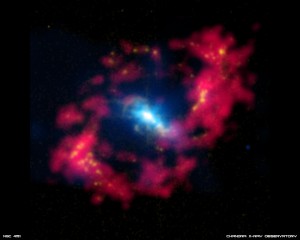 Science and Sauron! Never would have thought the two would overlap… but that’s geekery for you I guess. Thanks to Ringer Entwife for the heads-up.
Science and Sauron! Never would have thought the two would overlap… but that’s geekery for you I guess. Thanks to Ringer Entwife for the heads-up.
A team of scientists, led by Dr Sebastian Hoenig from the University of Southampton, have developed a new way of measuring precise distances to galaxies tens of millions of light years away, using the W. M. Keck Observatory near the summit of Mauna Kea in Hawaii.
The method is similar to what land surveyors use on earth, by measuring the physical and angular, or ‘apparent’, size of a standard ruler in the galaxy, to calibrate the distance from this information.
The research, which is published in the journal Nature, was used to identify the accurate distance of the nearby NGC4151 galaxy, which wasn’t previously available. The galaxy NGC4151, which is dubbed the ‘Eye of Sauron’ by astronomers for its similarity to the film depiction of the eye of the character in The Lord of the Rings, is important for accurately measuring black hole masses.
Recently reported distances range from 4 to 29 megaparsecs, but using this new method the researchers calculated the distance of 19 megaparsecs to the supermassive black hole.
Indeed, as in the famous saga, a ring plays a crucial role in this new measurement. All big galaxies in the universe host a supermassive black hole in their centre and in about a tenth of all galaxies, these supermassive black holes are growing by swallowing huge amounts of gas and dust from their surrounding environments. In this process, the material heats up and becomes very bright — becoming the most energetic sources of emission in the universe known as active galactic nuclei (AGN).
The hot dust forms a ring around the supermassive black hole and emits infrared radiation, which the researchers used as the ruler. However, the apparent size of this ring is so small that the observations were carried out using infrared interferometry to combine W. M. Keck Observatory’s twin 10-meter telescopes, to achieve the resolution power of an 85m telescope.


